NIL
Nick Saban & Trump Could Shape College Football’s Future
Getty Donald Trump and Nick Saban may have devised a massive change that impact NIL deals in college sports NIL deals have completely changed the landscape of college sports, and the way teams and players are using these deals to their advantage is still evolving. In the eyes of some folks, these NIL deals are […]
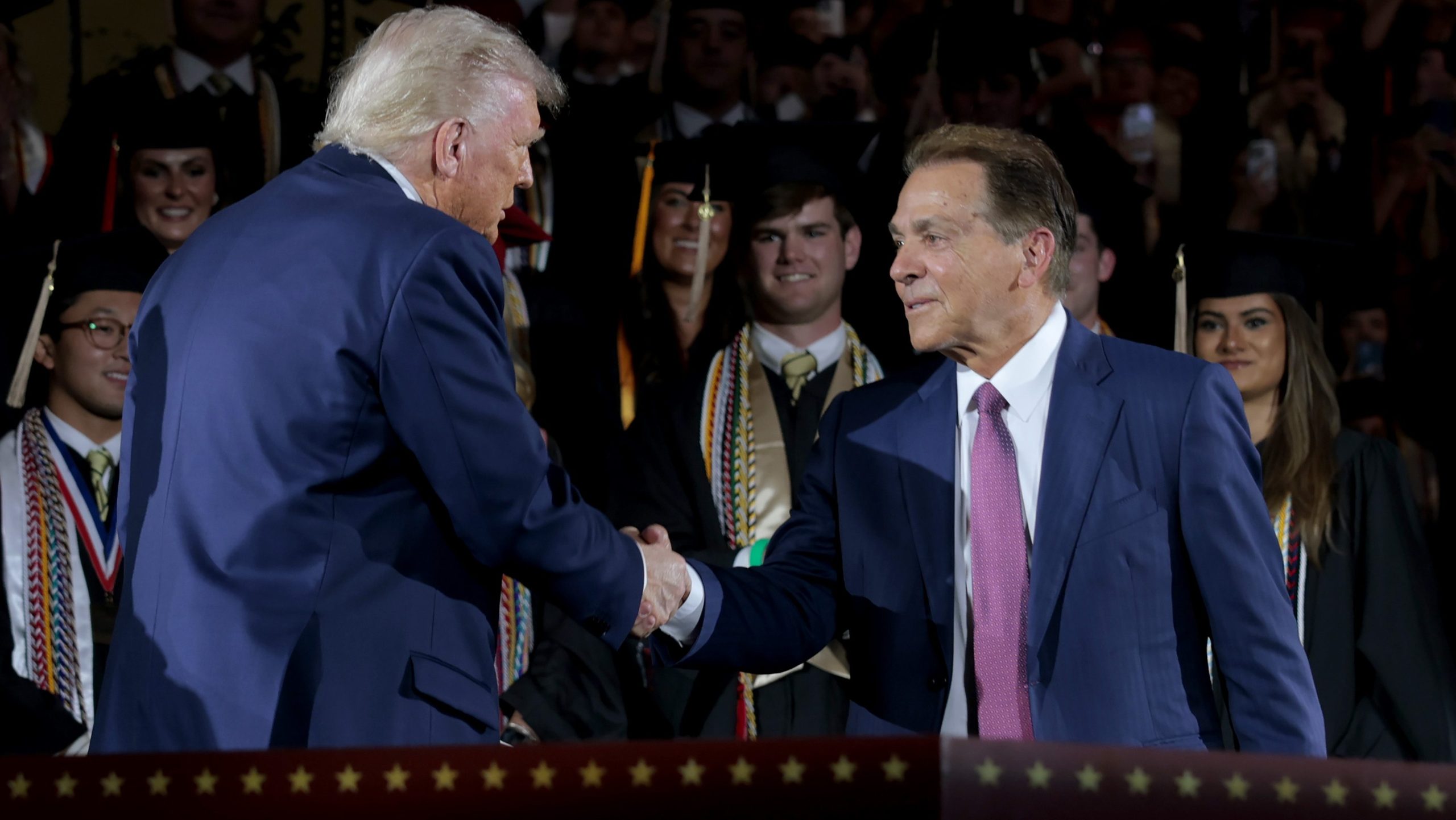

Getty
Donald Trump and Nick Saban may have devised a massive change that impact NIL deals in college sports
NIL deals have completely changed the landscape of college sports, and the way teams and players are using these deals to their advantage is still evolving. In the eyes of some folks, these NIL deals are being exploited, simply because there is no true structure in place when it comes to regulating them. After meeting with Nick Saban, the President of the United States of America, Donald Trump, could change that.
Saban enjoyed a legendary head coaching career with the Alabama Crimson Tide, winning six National Championships during his 17 seasons with the team. Saban opted to retire after the 2023 campaign, though, which is right around when NIL deals began to become more popular. According to Saban, one of the reasons he decided to step down the Crimson Tide’s head coaching position was because he saw where things were going with these NIL deals.
Donald Trump Could Make Big Changes to NIL Deals After Nick Saban Meeting
NIL deals allow college athletes to profit off the use of their name, image, and likeness while playing for their respective schools. Whether they are getting money from their school or through various companies and partnership deals, the top college athletes in the world have suddenly found themselves with an opportunity to earn millions of dollars before they even turn pro.
Without any regulations in place to control what can and can’t be done, teams and players are running buck wild when it comes to these NIL deals. The top schools in the nation, particularly in college football, are allotting millions of dollars to creating NIL deals for athletes they are looking to recruit or retain. Players, on the other hand, are looking to leverage these NIL deals in their favor and earn as much money as they can while they are in college.
Saban, who now works as an analyst for ESPN’s “College GameDay,” is one person who understands that the current utilization of NIL deals is unsustainable. After voicing his concerns to Trump, the President is reportedly considering implementing an executive order that would have a massive impact on the use of NIL deals in college sports.
“The Trump administration is considering an executive order that could increase scrutiny of the explosion in payments to college athletes since 2021, after the president met with former Alabama coach Nick Saban, White House officials said,” Josh Dawsey wrote for The Wall Street Journal.
Nick Saban Gearing up for 2025 Campaign with ‘College Gameday’


GettyFormer Alabama Crimson Tide head coach Nick Saban
Saban enjoyed a successful transition into the world of sports media in 2024, as his work on “College GameDay” was largely met with positive reviews. Saban is fresh off doing work with the “College GameDay” crew during the 2025 NFL draft, and he’s now gearing up for the 2025 campaign, as he’s set to remain a part of the team moving forward.
However, Saban could suddenly find himself having a big role in determining potential rules and regulations for NIL deals if Trump moves forward with this executive order. As a result, this is a storyline worth keeping tabs on as the new college football season draws near.
Owen Crisafulli Owen Crisafulli is a Breaking News Writer at Heavy. He recently received his Masters in Business Administration from Nichols College. Previously, he obtained his Bachelor’s degree in Sport Management and for a while ran his own sports website. Sports are his passion, and he thoroughly enjoys writing about thoughts and opinions that are related to the game. He has been a lifelong fan of the major professional teams in Boston and loves discussing all topics surrounding those teams. More about Owen Crisafulli
NIL
Texas Tech Red Raiders – Official Athletics Website
OKLAHOMA CITY, Oklahoma – The Collegiate Women Sport Awards (CWSA) announced its four finalists for the Class of 2025 Honda Sport Award for Softball on Friday. Texas Tech’s NiJaree Canady was named one of the finalists after winning the award last season and having another phenomenal season on and off the field. The Honda Sport Award […]
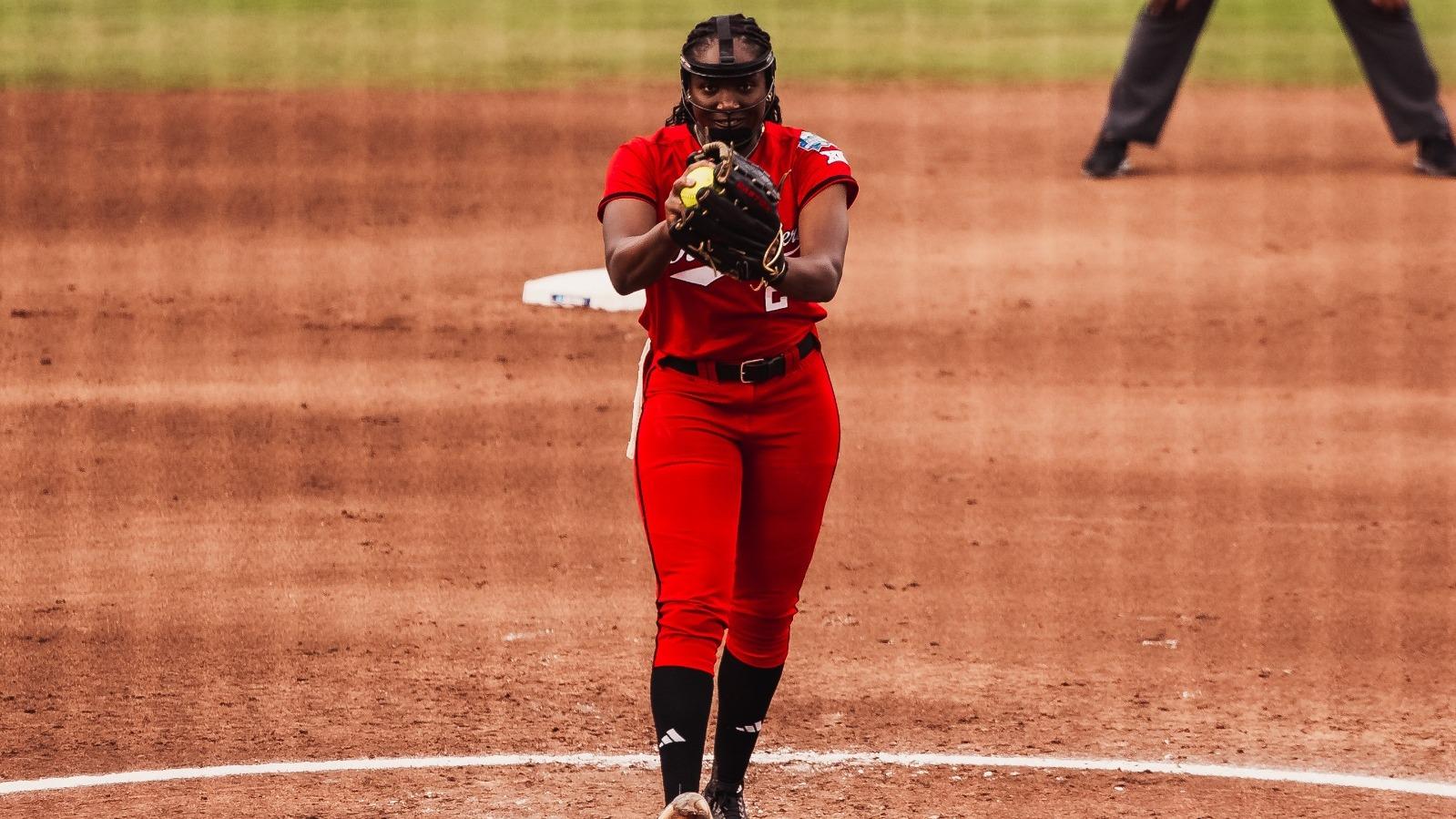
The Honda Sport Award is being presented for the 49th year and it recognizes the top women athletes in 12 NCAA-sanctioned sports. The award is chosen to symbolize the best of the best in their respective sport and the winner becomes a finalist for the Collegiate Woman Athlete of the Year and the 2025 Honda Cup presented on June 30.
The finalists are chosen by a panel of coaches that are members of the National Fastpitch Coaches Association and is voted on by administrators from over 1,000 NCAA institutions.
Full release here.
NIL
Ball State University – Official Athletics Site
The Ball State soccer team and head coach Andy Stoots have announced the additions of Fiona Kilian, Alyssa Mella and Joy Zeeman in advance of the 2025 season. “We are very happy to welcome Joy, Alyssa and Fiona to Ball State Soccer,” Stoots said. “They represent the soccer, experience and character qualities we were […]
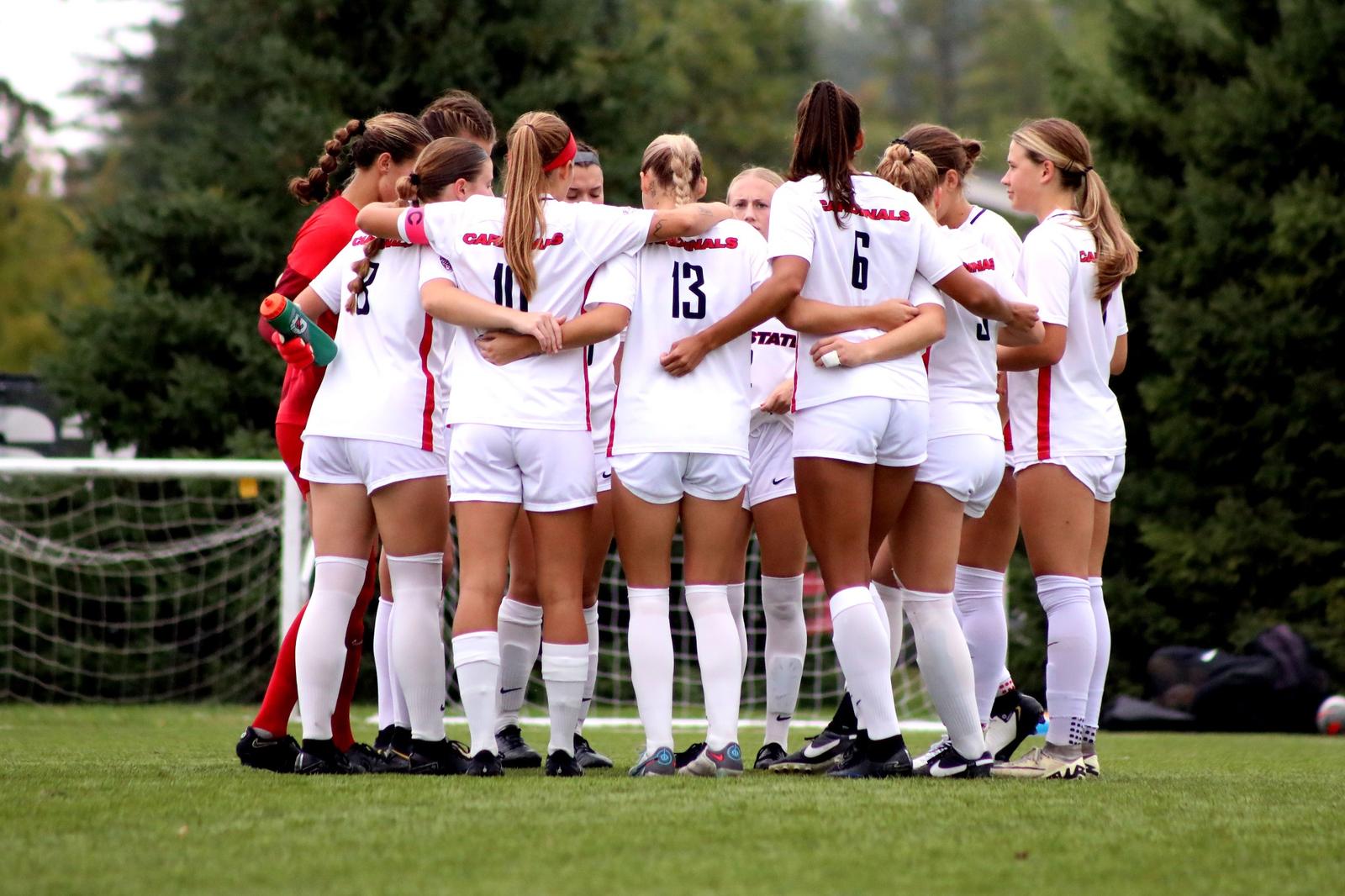
“We are very happy to welcome Joy, Alyssa and Fiona to Ball State Soccer,” Stoots said. “They represent the soccer, experience and character qualities we were looking for, and I am excited to see them add to our current roster!”
Fiona Kilian
Levittown, N.Y. | General Douglas MacArthur HS | Temple University
A midfielder who played her freshman year at Xavier and sophomore and junior seasons at Temple, Kilian started in 18 out of 19 games played last year with the Owls while scoring a goal and getting two assists.
Academically, Kilian will major in kinesiology before pursuing a career playing professional soccer.
Coach Stoots on Kilian
“Fiona will add to our midfield and our team with her experience at the collegiate level. She has played over 2,600 minutes the past two seasons and has the technical qualities we were looking for to add to the midfield group.”
Alyssa Mella
Oakville, Canada | Thomas A. Blakelock HS | Saint Francis University
A forward who started in 16 of 18 matches played as a freshman in 2024 at Saint Francis, Mella scored the most goals (three) by a freshman at Saint Francis since 2018. Mella was named the Northeast Conference Rookie of the Week last year on Sept. 23 and earned two NEC Prime Performer recognitions.
Mella intends to major in exercise science with a physical therapy concentration at Ball State and attend either physical therapy school or medical school after graduating.
Coach Stoots on Mella
“Alyssa is a versatile player with an attacking mindset and ability to put service into the box. She is another player that played a ton as a freshman, and we are looking forward to her joining us in August!”
Joy Zeeman
Montreal, Canada | Royal West Academy | Saint Francis University
A defender who started in all 18 matches in her freshman season at Saint Francis, Zeeman played in all but 56 minutes in 2024 for the Red Flash back line that had its best defensive season since 2012.
Academically, Zeeman plans on majoring in accounting with a minor in international business at Ball State before pursuing a career as an accountant after graduation.
Coach Stoots on Zeeman
“Joy brings a calm presence and very solid distribution out of the back. She has played a ton of minutes as a freshman and gained valuable experience playing almost every minute last fall. We are excited for her to join us in August!”
NIL
McCarter’s Playing Field: Sports Law Insights – May 2025 | McCarter & English, LLP
Welcome to McCarter’s Playing Field: Sports Law Insights, where you’ll find the latest in sports law, notes about our practice, and important updates for athletes, teams, institutions, facilities, investors, and others in the industry. House v. NCAA Update As previously reported, the April 7 House v. NCAA hearing ended with Judge Wilken giving the settlement […]
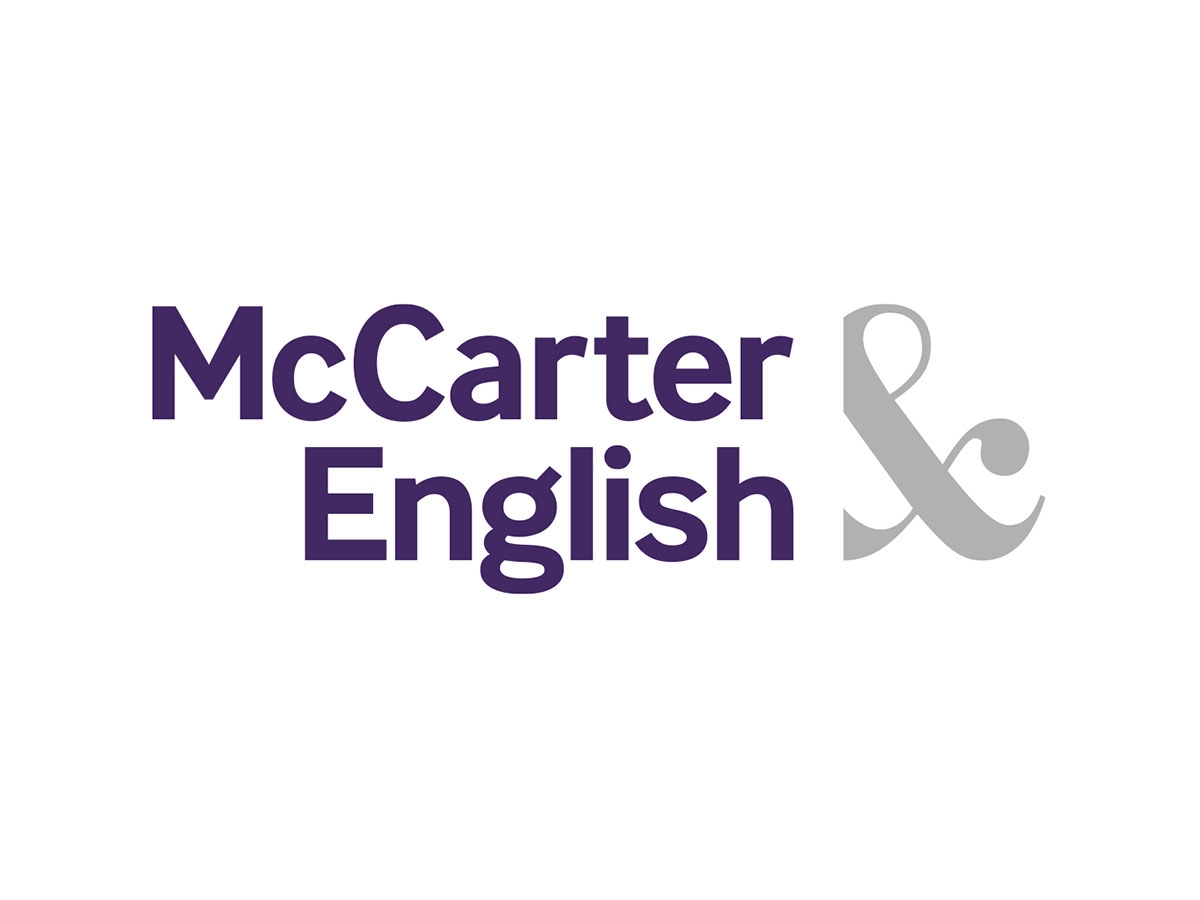
Welcome to McCarter’s Playing Field: Sports Law Insights, where you’ll find the latest in sports law, notes about our practice, and important updates for athletes, teams, institutions, facilities, investors, and others in the industry.
House v. NCAA Update
As previously reported, the April 7 House v. NCAA hearing ended with Judge Wilken giving the settlement parties an opportunity to address certain concerns regarding the implementation of roster limits and the impact of the 10-year settlement on future athletes.
The following week, the parties filed a revised settlement which addressed the future class member issue. As reported by Michael McCann and Daniel Libit for Sportico, the parties updated the release provisions “to clarify that future Division I athletes will not release their athletes’ injunctive relief claims until they have received notice and an opportunity to object.” However, the modified proposal did not address the Court’s concerns regarding roster limits. While the litigation parties asserted that the revised settlement met the “fair and reasonable” standard for approval, objections flooded the docket. Judge Wilken, reaffirming her earlier concerns, admonished the attorneys to find a way to grandfather in or phase in the roster limits in order to have a chance of approval.
On the evening of May 7, the parties submitted another updated proposal, this time modifying the language to allow, but not require, schools to grandfather in roster limits. The key updates to the roster limit provisions are as follows:
- Roster limits will not apply to any athlete on a Division I roster during the 2024–2025 academic year who was, or would have been, removed from that roster for the 2025–2026 academic year due to the settlement.
- Roster limits will not apply to high school athletes recruited to join a Division I roster for the 2025–2026 academic year who would have been removed because of the new limits.
- Athletes falling into either of these two categories will not count against any roster limits for the duration of their Division I eligibility.
- If an athlete transferred—or planned to transfer—due to being informed they would lose their roster spot under the new limits, NCAA rules will not prevent that athlete from transferring back to their original school or rescinding the transfer.
Following these changes, objectors continued arguing that the settlement would still harm class members by eliminating roster spots. In response, class attorneys emphasized that the updated language sufficiently addresses the judge’s concerns by allowing for grandfathering. However, as noted by Michael McCann, the revised proposal still leaves open the possibility that athletes who opt out of the settlement may be affected by the roster limits. Class attorneys maintain that roster decisions have always been at the discretion of coaches, and nothing in the settlement changes that longstanding reality.
Neither side appears likely to concede, but, for now, only one opinion truly matters: Judge Wilken’s. It remains to be seen whether the latest revisions will be enough to warrant approval of the settlement.
Power Conferences Looking to Take Control Back in Rule Enforcement Through Contract
As detailed in the story below, Tennessee has passed a new NIL law that allows schools to disregard forthcoming rules stemming from the House settlement. Tennessee is not the first state—and likely won’t be the last—to enact legislation enabling schools to circumvent the settlement’s guidelines.
In response, officials from the power conferences have drafted an unprecedented contract designed to prevent schools from using state laws to override the new House-related policies. This contract would require institutions to waive any right to pursue legal action against the College Sports Commission.
As reported by Ross Dellenger, the drafted contract has been circulated to numerous school administrators and would obligate participating schools to enforce the new policies, regardless of any conflicting state laws. Institutions that refuse to sign risk losing their conference membership—and the competitive opportunities that come with it.
States are Not Beholden to the NCAA
States are trying to obtain competitive advantages in recruiting college athletes, and right now, it appears Tennessee leads the pack on athlete-friendly laws. The state’s new NIL law will prohibit basically any restrictions that may come with the House settlement. Most notably, the House settlement has a cap for how much schools can pay athletes, and creates a clearinghouse run by Deloitte that will review all NIL deals over $600 to, first, determine if the deal is a school-affiliated deal, i.e., between an athlete and an “associated third party.” If not, the deal will be assumed to be for fair-market value. If the deal is an affiliated deal, the clearinghouse will perform a full analysis to either “clear” the deal as meeting fair-market value or flag the deal as a potential risk to the athlete’s eligibility. Tennessee law now prohibits these restrictions from taking effect at schools in the state. Tennessee is not the first state to pass laws that conflict with and supersede regulations that may arise from the House settlement, and with the current competitive and chaotic landscape of college athletics, they likely will not be the last.
Rutgers Football Player Receives Preliminary Victory on the NCAA’s Five-Year Rule
Continuing the trend started by Vanderbilt QB Diego Pavia of challenging the NCAA’s rule that junior college (JUCO) seasons count toward eligibility limits, Rutgers football player Jett Elad secured perhaps the most significant ruling to date. Elad obtained a preliminary injunction from Judge Zahid N. Quraishi in the U.S. District of New Jersey, allowing him to remain eligible for the 2025–2026 football season despite having played four seasons within a five-year span.
Elad argued that the NCAA’s policy, which counts JUCO seasons against a player’s eligibility, constitutes a violation of Section 1 of the Sherman Act by unreasonably restraining trade. In his opinion, Judge Quraishi emphasized the commercial nature of college eligibility and the anti-competitive effects of the rule, noting that it restricts athletes’ opportunities to earn NIL compensation, thus making the Sherman Act applicable.
Judge Quraishi highlighted the specifics of Elad’s NIL opportunities at Rutgers, stressing the substantial financial impact of his deals. He emphasized that for many athletes, especially those unlikely to have professional careers, NIL earnings may represent their primary chance to profit from their athletic talents.
This ruling—and Judge Quraishi’s focus on the economic consequences of the NCAA’s eligibility rules—could prompt significant changes to NCAA policy and lead to a wave of similar litigation challenging eligibility restrictions.
NCAA Advises Tennessee Court Not to Consider Elad Decision in College Baseball Case
On February 12, Alberto Osuna, the former UNC Tar Heel and JUCO baseball standout, sought to follow in Diego Pavia’s footsteps by submitting a waiver for an additional year of NCAA eligibility, intending to play the 2025 season at the University of Tennessee. Osuna needed this waiver given NCAA’s “JUCO Rule,” as referenced in the Elad case discussed above. However, U.S. District Judge Charles E. Atchley denied the request, leaving Osuna’s hopes of continuing his college baseball career in doubt.
Following the favorable ruling in Elad’s case, on April 25, Osuna petitioned the court to reconsider its decision. In response, the NCAA argued that reconsideration should be granted only under “narrow and defined circumstances.” The organization further stated that the Elad ruling “does not provide a sound basis for” reconsideration and asserted that the New Jersey court had erred in its decision.
The NCAA’s response suggests an effort to preempt any potential ripple effects that could challenge longstanding eligibility rules.
Arkansas Implements Law Exempting NIL Money from State Income Tax
In recent months, several states proposed bills that would create tax exemptions for NIL earnings, aiming to incentivize athletes to sign with schools in those states. Arkansas is the first state to officially enact such a law. The new legislation allows schools to directly compensate athletes through NIL deals, exempting those payments from state income tax. Additionally, the law provides for confidentiality of those payments, potentially with the intention of shielding them from the new NIL clearinghouse requirements that would take effect if the House settlement is approved.
NCAA Implements Rule Changes
The NCAA Board of Directors voted to approve nine legislative proposals that would eliminate 153 existing NCAA rules, contingent on final approval of the House settlement. These changes, all part of the settlement, include allowing direct payments to athletes through revenue sharing, introducing roster limits, and eliminating scholarship caps. Other notable changes include the creation of an NIL enforcement entity and the establishment of an NIL clearinghouse, which would oversee and evaluate NIL deals to ensure that (1) a valid business purpose exists and (2) the compensation falls within a reasonable range.
Louisiana to Directly Pay Athletes, No Matter What Happens in House
The Louisiana government issued an executive order, with the intention of allowing Louisiana schools to directly pay college athletes. The Order says that it “shall remain in effect until the earlier of: A) The effective date of any federal law enacted after the date of this Order regulating the rights of student athletes to receive compensation for the use of their NIL; or B) The effective date of any settlement related to the [House] Litigation.”
NCAA’s Very Own Roger Goodell?
As mentioned in our last newsletter, if the House settlement reaches final approval, the Settlement Implementation Committee is expected to take over monitoring compliance, and as noted by Bryan Fischer in Sports Illustrated, the committee is expected to take on a similar role to that of NFL Commissioner Roger Goodell. The entity detached from the NCAA is “set to police everything from compliance with the salary cap to issues surrounding external NIL deals circumventing the process to, even, handing out penalties to potential violators.” It should be especially interesting to see how the committee handles compliance with the Deloitte clearinghouse, which will review NIL deals for fair-market-value. Deloitte has recently said that 70% of the NIL deals previously completed between collectives and athletes would have been flagged as potentially non-compliant.
Collective News
The main collective at Cal, California Legends Collective, has pulled all funding to the program and is holding these funds until the school puts newly hired GM of football, Ron Rivera, in charge of the program. SFgate notes that this tension stems from the school’s neighboring rival, Stanford, putting newly hired GM Andrew Luck in charge or all decision-making for the football program. California Legends Collective wants Rivera to be granted the same decision-making power as Luck and is far from pleased that he currently reports to Chancellor Rich Lyons. This is a fascinating story that outlines the power these school collectives hold and further emphasizes the direction football and basketball programs are heading, being led by General Managers.
Villanova Star Wants His Money
You might remember the instant classic between Villanova and UNC in the 2016 March Madness final. That game ended with UNC’s Marcus Paige hitting one of the craziest off balance three-pointers you’ve ever seen to tie the game with seconds left, only for Villanova’s Kris Jenkins to come up the court moments later and hit a buzzer-beater-three to win the national championship as confetti rained down. What you might not remember is that this game was before the NIL-era of college sports, and despite Kris Jenkins becoming an instant star that moment, the college junior was not able to profit from his quick rise to fame. Now he is suing the NCAA for the missed opportunity.
Michael McCann shares that Jenkins opted out of the House settlement, and has now filed suit in the Southern District of New York. Jenkins “contends the NCAA, the ACC, the Pac-12, the Big Ten, the SEC and the Big East violated antitrust law by agreeing to eligibility rules that barred him from capitalizing on his NIL while he played at Villanova.” Jenkins holds perhaps the most iconic college sports moment of the past 20 years, and he contends that the brand deals and merch sales would have flooded in had he been able to profit off the moment while it was still hot. Jenkins’ suit contains many of the same arguments as similar suits we have seen recently against the NCAA—mainly that the NCAA’s use of his NIL without compensating him is an antitrust violation. Jenkins hopes he will prevail and be awarded damages to make up for the compensation he believes he missed out on in 2016.
Shaq Takes on Major Role at Sacramento State
NBA legend Shaquille O’Neil has agreed to become the volunteer GM of basketball at Sacramento State, where his son, Shaqir, currently plays. Shaq’s new role creates a star-studded duo leading basketball at Sacramento State, as former NBA player Mike Bibby is the current head coach of the program. Shaq joins in on the trend of current and former star athletes taking on GM/Assistant GM roles at schools.
[View source.]
NIL
NiJaree Canady’s Michael Jordan-like mentality showed against Ole Miss
Why Texas Tech could blow up the 2025 WCWS bracket The Oklahoman’s Jenni Carlson breaks down why Texas Tech and NiJaree Canady will be the team to break the Women’s College World Series bracket this year. Texas Tech pitcher NiJaree Canady led her team to a 1-0 shutout victory over Ole Miss in their Women’s […]
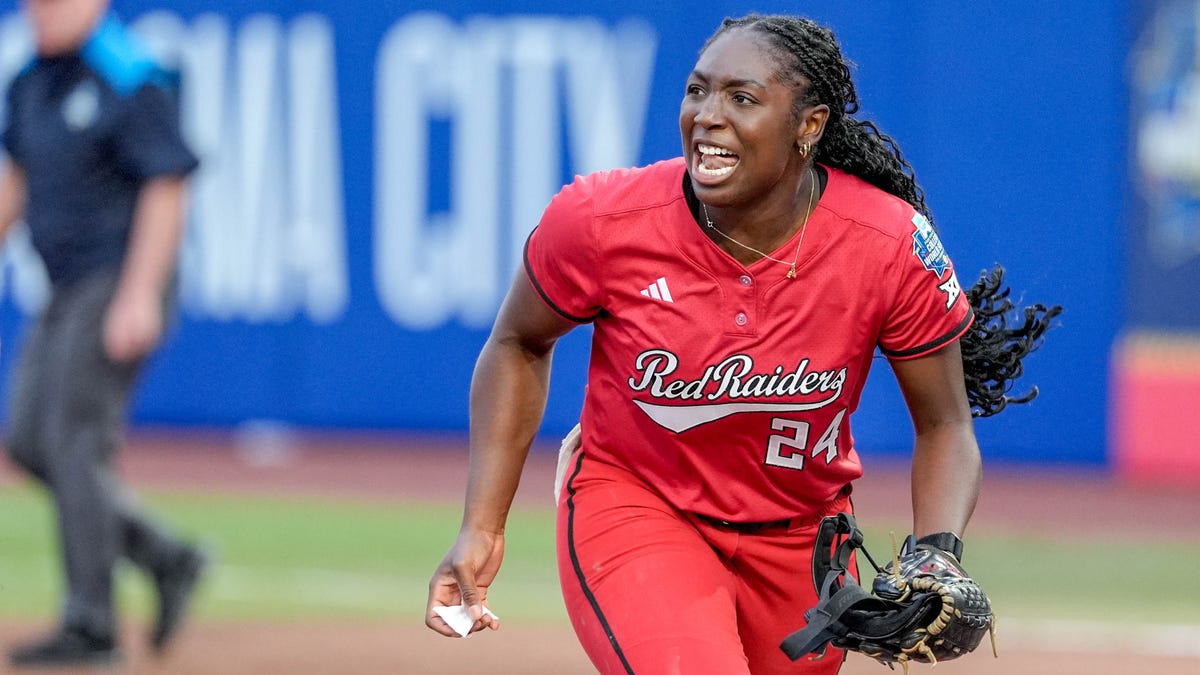
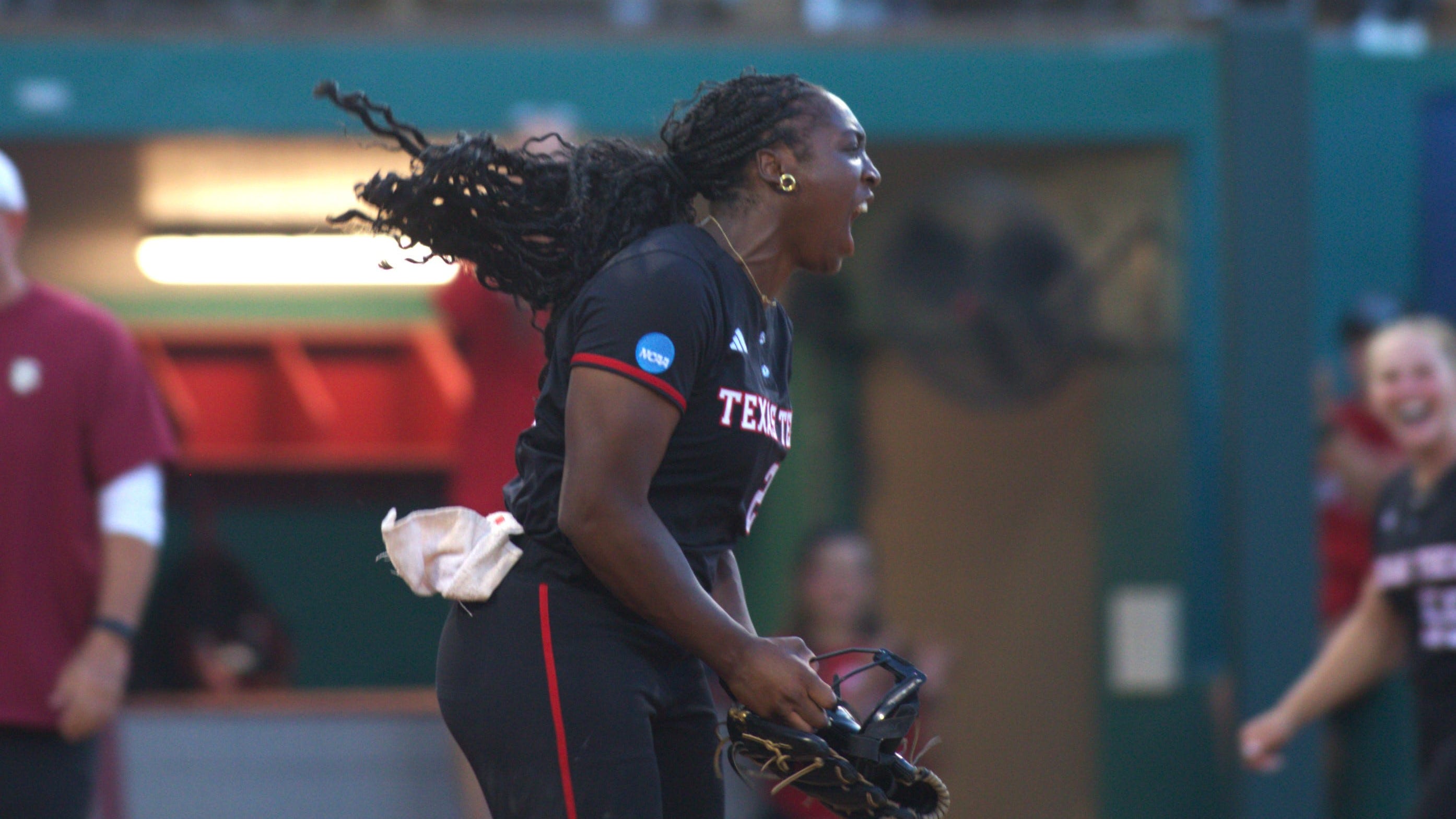
Why Texas Tech could blow up the 2025 WCWS bracket
The Oklahoman’s Jenni Carlson breaks down why Texas Tech and NiJaree Canady will be the team to break the Women’s College World Series bracket this year.
- Texas Tech pitcher NiJaree Canady led her team to a 1-0 shutout victory over Ole Miss in their Women’s College World Series debut.
- Canady’s dominant performance included 10 strikeouts, including one against Ole Miss’ star pitcher Aliyah Binford.
- Canady’s focused demeanor in the circle contrasts sharply with her off-field personality.
- Both Texas Tech’s pitching coach and catcher noted Canady’s readiness to dominate before the game.
- This win marks the first WCWS victory for Texas Tech and the first shutout debut win since 2005.
OKLAHOMA CITY — Sitting in front of microphones and reporters, it would be hard to decipher how NiJaree Canady becomes a completely different person when she’s pitching.
Get Canady in the circle of a softball diamond like she was Thursday night at Devon Park, her demeanor changes. The emotions come out, coupled with screams and elation after strikeouts. Some outbursts are louder than others, usually reserved for special occasions.
Canady saved her biggest “NiJa Stomps”for the seventh inning of Texas Tech softball’s Women’s College World Series game against Ole Miss. The first came for Ole Miss’ two-way star Aliyah Binford, who also pitched a solid game in the 1-0 Texas Tech victory. During Wednesday’s press conferences, Binford took offense to a question about facing Canady, saying she wasn’t intimidated by her.
Binford allowed just four hits and one walk in the circle but struck out for a second time against Canady at the plate to lead off the seventh inning.
The last “NiJa Stomp” came when Canady earned her 10th strikeout to preserve the win. Canady has won plenty in the WCWS, but Thursday marked the first time in her career her team has started the WCWS with a victory. Stanford lost its first games in its two appearances with Canady.
“Lauren (Allred) was just saying it’s my first time too,” Canady said. “It was definitely a goal of mine just to come back and have a day off tomorrow. Definitely huge, so just to be able to give this team a rest is gonna be really good.”
Canady said she and battery mate Victoria Valdez have similar personalities, where the fun comes off the field and it’s business between the lines. Valdez and Tech pitching coach Tara Archibald have spent enough time around Canady to know when she’s locked in.
Each gave head coach Gerry Glasco the same message before first pitch — which came 75 minutes later than scheduled due to a weather delay — that Canady was ready to dominate.
Archibald told Glasco he thought Canady was going to hit 75 miles per hour against the Rebels. Valdez reported that Canady was not someone the head coach needed to worry about, saying “She’s on.”
“When both Tara and Vic give me that report,” Glasco said, “I knew she must have been special in the bullpen.”
Elite players have an innate ability to flip an internal switch when the time is right. ESPN broadcaster Kevin Brown noted the same thing about Canady, how different she is between interviews and pitching against the best teams in the country.
“No matter what sport you just run across people that can turn it up at game time,” Glasco said, “and she’s that player.”
Glasco continued by saying he grew up in Illinois, and Chicago Bulls legend Michael Jordan was known for the same mentality.
“That’s what you see with NiJa,” Glasco said. “It’s amazing her tendencies.”
Players of Jordan’s caliber also have the memory of an elephant. His Airness was famous for even fabricating stories about opponents to give himself a mental edge in the game. Canady’s brain functions similarly.
“She’s remember things, “Glasco said, “and say it out loud and motivate herself. She’s an amazing competitor.”
Those tactics paid off for Texas Tech’s first Women’s College World Series win in program history. It also marked the first time since 2005 that a team making its WCWS won its debut via shutout. That came when Monica Abbot pitched Tennessee to a win in the Vols’ first trip to Oklahoma City.
“NiJa was able to bow her neck,” Glasco said, “and just do what she’s done all year.”
NIL
Big 12 coach isn’t sure Texas Tech’s NIL efforts will buy TTU a championship in 2025
Heading into year four of the Joey McGuire era of Texas Tech football, the Red Raiders are at a pretty interesting spot. This is a team that, given the influx of NIL money and the way that TTU worked in the transfer portal, could conceivably make a run for the Big 12 championship this season. […]

Heading into year four of the Joey McGuire era of Texas Tech football, the Red Raiders are at a pretty interesting spot. This is a team that, given the influx of NIL money and the way that TTU worked in the transfer portal, could conceivably make a run for the Big 12 championship this season. Or, well, that’s at least the hope.
While it previously appears like Texas Tech may have hit a ceiling under McGuire’s leadership with an average of 7-8 wins a season, the Red Raiders might be a bit closer to breaking through than what some are comfortable acknowledging. Yes, Texas Tech gave up 51 points to Abilene Christian a season ago, but the Red Raiders also went out and put up a 6-3 Big 12 record last season.
So, maybe with the hiring of brilliant young coaching minds like a brand new defensive coordinator in Shiel Wood and a brand new offensive coordinator in Mack Leftwich, we’ll see some improvement in the very near future.
Oh, and by the way, the Red Raiders also managed to churn through their roster (shoutout to that aforementioned NIL push and the transfer portal) that resulted in 20ish new players showing up in Lubbock to help reinforce things across the board.
But as one anonymous coach told Athlon Sports, it’s not clear if that sort of spending will put the Red Raiders on the throne of the Big 12 in just one cycle.
Rival Big 12 coach questions if Texas Tech football will be elevated into conference championship contenders via NIL spending
“They’re better pretty much everywhere, obviously. But don’t assume you can spend your way to a power conference championship in one cycle,” one coach anonymously told Athlon Sports. “Don’t get me wrong — all of us would rather have an NIL collective that’s throwing a ton of cash instead of the alternative, but there’s a lot of questions here.”
And there is a pretty big thing that this coach brings up in that quote there. That whole thing about “one cycle.” It’s worth pointing out just how quickly some rebuilding projects are happening these days. Like the Arizona State Sun Devils going from the bottom of the Pac-12 to, with some portal work and some changes on the coaching staff, thriving in the Big 12.
Will we see similar sorts of elevation from the Red Raiders this fall? I don’t know. Will this be something that takes another year or two? Maybe? But with as volatile as this conference can be and with the way the Red Raiders were looking pretty good in conference play last year, maybe we see things actually work out in Texas Tech’s favor.
Also, is that sort of success sustainable? Will Texas Tech continue to spend in a way that brings that sort of recruiting boost to Lubbock on an annual basis? We’re really still pretty early in this current era of college football and the sample sizes are still pretty small, all things considered.
NIL
Thoughts on Yaxel Lendeborg committing to Michigan basketball and what it means for the Wolverines
Yaxel Lendeborg, the top-rated player in the Transfer Portal, will play for the Michigan Wolverines this winter. The talented big announced the news earlier this week, giving Dusty May and Co. a jewel in their Transfer Portal haul and raising expectations for Year 2 in Ann Arbor. Lendeborg joins the roster alongside Elliot Cadeau (North […]
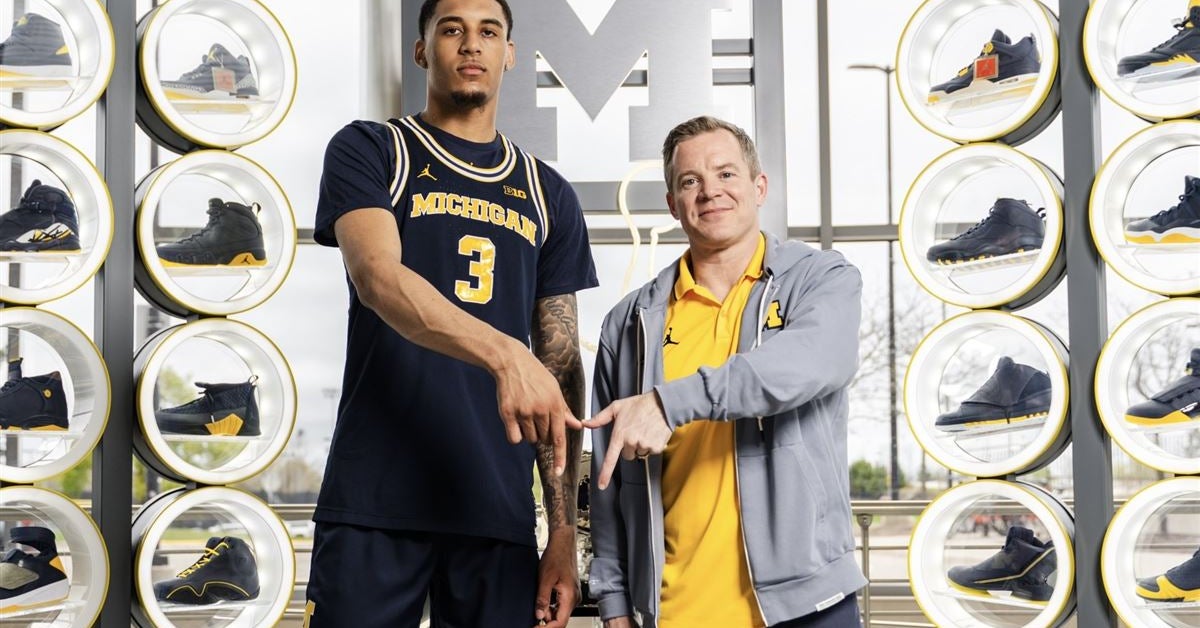
Yaxel Lendeborg, the top-rated player in the Transfer Portal, will play for the Michigan Wolverines this winter.
The talented big announced the news earlier this week, giving Dusty May and Co. a jewel in their Transfer Portal haul and raising expectations for Year 2 in Ann Arbor. Lendeborg joins the roster alongside Elliot Cadeau (North Carolina), Morez Johnson Jr. (Illinois) and Aday Mara (UCLA) as they complement Trey McKenney, Nimari Burnett, Roddy Gayle Jr., Will Tschetter and others with the goal of improving on last season’s run to the Sweet Sixteen.
Last season, Lendeborg averaged 17.7 points, 11.4 rebounds, 4.2 assists, 1.8 blocks and 1.7 steals per game at UAB. He’s a two-time AAC Defensive Player of the Year and first-team All-AAC and is considered among the best bigs in the country.
Here are thoughts on Yaxel Lendeborg picking Michigan over the NBA Draft and what it means for the Wolverines:
Why Yaxel Lendeborg chose Michigan over the NBA Draft
Lendeborg was pretty transparent about the factors influencing his decision between Michigan and the NBA Draft. He explained that his ultimate goal was securing a guaranteed NBA contract, but that he had legitimate interest in the Wolverines.
This week, Lendeborg spoke with The Banner and explained why he ultimately withdrew from the NBA Draft process.
“When I working out with NBA teams, working through that whole process talking with teams, they pretty much assured me, or reassured me, that even if I was to go to Michigan, the majority of them would still be with me and it wouldn’t hurt my draft stock,” Lendeborg told The Banner.
“I wouldn’t say I wasn’t ready to go into the draft, but skill wise I don’t know if I would be as productive as I think I am. Pretty much what decided it was teams telling me I could still get drafted in the same spot or better if I go polish my game.”
Lendeborg added that “nobody really promised or guaranteed me” a first-round selection and that excelling against better competition could move his stock upward next year at this time. You can read his full interview here.
Lendeborg is more proof that Michigan is competitive in the NIL space
Dusty May spoke candidly with The Michigan Insider last month about how NIL at Michigan “improved greatly” during his first season at the helm in Ann Arbor. From an NIL perspective, he said, Michigan and other top programs can compete with a second-round NBA contract.
“Our market allows the best players to be competitive with a second-round contract,” May told TMI.
“… The last couple of years there’s been a boon in what the players are able to make, and what the market says. So now the best players at all of these teams that are considering going to the NBA, you have to be competitive with that second-round pick. Obviously the first round is a guaranteed multi-year contract. It’s tough to compete with that. But the second-round picks, they’re probably going to be much better off if they go to college from a financial standpoint, and it gives you a chance to move up and improve and get a chance to be a first round the following year.”
And Michigan can also sell playing in front of sold-out arenas and for passionate fan bases — something the G League cannot offer. The educational opportunities, development at top-tier facilities and expectations to compete in the NCAA Tournament are also bonuses. This isn’t unique to the Wolverines, and this week saw a number of players choose a return to college basketball as NIL has helped make the sport a preferable option compared to a two-way or G League contract.
Dusty May is swinging big in recruiting, and it’s working
Michigan had to rebuild through the Transfer Portal out of necessity last offseason, but the end product was better than most people expected. The Wolverines nabbed three high-major players, plus two mid-major stars (Vlad Goldin, Danny Wolf) with clear starting potential.
Dusty May got to work quickly this offseason, visiting Elliot Cadeau hours after the Wolverines were eliminated from the NCAA Tournament by Auburn. Adding Morez Johnson (Illinois), Aday Mara (UCLA) and a likely first-round NBA Draft talent in Lendeborg again places Michigan among the top-ranked Portal classes in the country. Meanwhile, the program lost only one starter (Tre Donaldson) to another school.
NIL, of course, is a major factor here, but so is the staff’s ability to recruit. There’s a reason Lendeborg picked Michigan over both the NBA and the many, many college programs that were interested in his services.
“Our staff does a great job of developing relationships,” May said last month. Specifically with Lendeborg, it’s clear the UAB transfer’s visit to Ann Arbor and the Michigan staff’s support of him at the NBA Combine in Chicago played a significant role in swaying him toward the Wolverines.
At the same time, the staff can and does point to their success in Year 1 — and the entertaining, fast-paced style of basketball — and use that as a recruiting tool moving forward.
“There were a lot of questions for us coming in and players, parents, agents, they weren’t quite sure yet how this coaching staff would be, how would this team be,” said assistant coach Drew Williamson. “And now you go out and have some success the first year and everybody’s kind of like, ‘Okay, well, that translated from what we thought it would be.'”
Yaxel Lendeborg gives Michigan another powerful, intriguing front court
About a year ago, when Michigan coaches started talking about playing Danny Wolf and Vlad Goldin together, the public reaction was ambivalent. The result, of course, is that what the staff saw behind closed doors in practice translated against opponents: Area 50-1, the combination of two skilled 7-footers, made the Wolverines a unique beast on offense.
This offseason, Dusty May and Co. have several more intriguing puzzle pieces at their disposal. Start with Yaxel Lendeborg, who played the majority of his minutes as a small-ball ‘5’ at UAB and offers value as an on-ball playmaker, defender and rebounder. His age belies his inexperience; Lendeborg saw just 11 games in high school and has markedly improved in each season he’s played. If his 3-point shooting (36% on 69 attempts) translates with more volume, it could be the key to a potent Michigan offense.
It’s likely Michigan again plays two-big lineups. The 7-foot-3 Aday Mara is a good rim protector and finisher in the paint, though he played limited minutes with the Bruins. (KenPom compared his output last season at UCLA to Vlad Goldin at FAU in 2022.) Morez Johnson is a force on the boards, and his motor and athleticism at 6-foot-9 will impact games. Then there’s Will Tschetter, the veteran who can help space the floor with his 3-point shooting.
Not even Michigan’s coaches know how all the pieces will fit, but odds are good that some combination of those four will click and once again make the Wolverines an entertaining, high-ceiling team.
-

 College Sports1 week ago
College Sports1 week agoPortal Update – Basketball and Gymnastics Take Hits
-

 Rec Sports2 weeks ago
Rec Sports2 weeks agoThe Program, a New Basketball Training Facility, Opening in Greenpoint This September
-
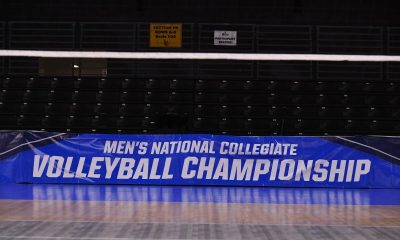
 Sports3 weeks ago
Sports3 weeks ago2025 NCAA men’s volleyball championship: Bracket, schedule, scores
-
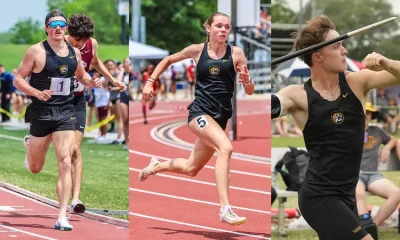
 Sports3 weeks ago
Sports3 weeks agoBarnes, Lippert and Smeal Set School Records at APU Franson Meet
-

 Youtube3 weeks ago
Youtube3 weeks agoAnthony Edwards’ Top 10 Plays of the 2023-24 NBA Regular Season! #BESTofNBA
-

 NIL3 weeks ago
NIL3 weeks ago2025 NCAA Softball Tournament bracket, schedule revealed
-
Sports3 weeks ago
Beach volleyball pairs championship: Day one — The
-

 Motorsports3 weeks ago
Motorsports3 weeks agoLayne Riggs (Bed Cover) Disqualified From Second-Place
-
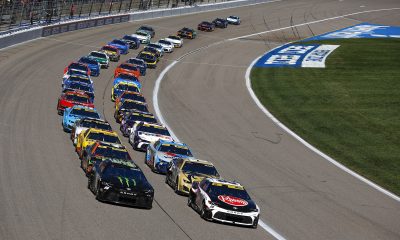
 Motorsports3 weeks ago
Motorsports3 weeks agoNASCAR Delivers Blow To Two Cup Teams After Pre-Race Inspections In Kansas
-

 Youtube3 weeks ago
Youtube3 weeks agoDISRESPECTFUL!
STEPHEN A. CALLS OUT LEBRON for Giannis and NBA eras comments
| First Take

































